

Author: Kent Moors, Ph.D.
Decisions, even pig-headed ones, have consequences.
This edition of the Classified Intelligence Brief Spy Tale series tells the bare outlines of a story that is as distasteful to write now as it was to experience over 35 years ago. Because this is a tale of an unelected grand-standing policy hack playing with other people’s lives, and then cutting his own losses when things went off the rails.
Not surprisingly, negotiations over writing this installment were quite protracted. I rejected the initial suggestions. They would have truncated the narration to such an extent that reading it would not make sense. But my personal bitterness even now so many years after the events was allowed some space.
It was clear as well that, while too young to have been personally hit by what happened, “mother” had been informed by the internal history and was as opposed to the perpetrator as I am still today. The central figure continues to walk the earth, by the way, but has been relegated to a place where he can do no further injury.
Unfortunately, too late for some.
So, we ultimately agreed on a version that did not name the moral midget who perpetrated the disaster, mention the specific dates or operational cryptonyms, provide any of the other names involved, nor provide much of the particulars. But I am able to include some places and circumstances.
Once again, something is better than nothing.
I was involved in this operation despite my personal opposition to it. In those days, I could not (yet) pick and choose assignments. You bit down hard, moved through it, and hoped for the best. That my role oversaw the trawling of counterintelligence (CI) sources to protect against Russian intel response put me at the periphery. Unfortunately, I would watch the whole tragedy unfold nonetheless, making it even more difficult. I was privy to what was collapsing and could do nothing about it. That was reserved for higher pay grades.
It was not simply that the action was insufficiently planned, high risk, prone to all manner of unanticipated consequences, depended upon support from an unreliable rabble, and had too many unknowns. These were often par for the course. As I saw it, the problem was more basic than that. The op was thought up by a cowboy enamored by his own press, somebody who disappeared when the time came to take responsibility for his hard headedness.
When it all unraveled, I spent most of an afternoon in DC on the other side of 15th St, NW from this building:
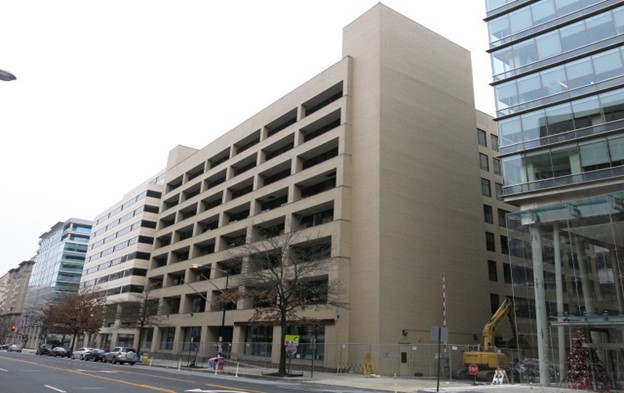

It is about as close as I ever came to blowing the whistle. I am angry even now thinking about it.
If you must put others in harm’s way, at least have the maturity to take responsibility when things go south. Not this guy, not his vanity. His PR said that he was the kind of person you needed alongside in a foxhole when things got tough. If it were up to me, I would find another foxhole.
Shortly after this small man showed up, attempting to ramrod covert actions through the agency from the outside, a sign appeared in the CIA’s Central American Task Force HQ:
Six Phases of a US Government Sponsored Covert Action: Enthusiasm – Disillusionment – Panic – Search for the Guilty – Punishment of the Innocent – Praise and Honor for the Nonparticipants.
Within a few years, it stopped being humorous; just about the time his inability to see beyond his own glory cost American lives, resulting in a few more stars on a Wall of Honor in Northern Virginia. When the going got tough, this guy literally went on vacation.
Going through training and learning the ropes early I had a few mentors, fellows I respected. The one having the greatest impact was a veteran of the OSS (Office of Strategic Services) in World War II and the frantic early days of the agency. He had developed personal rules of conduct, all of which I committed to memory and put to use in the field.
One of them is basic to our story today:
“If you have no way out, don’t go in. And if you do have one, damn it, remember to save the directions.”
This is the “goodbye code,” how to make it back if the op dissolves. There are several parts to the “code.” Since this is always a foreign operation, one at all times must be cognizant of the internal, cultural, geographic, and geopolitical constraints. These need to be integrated with factors addressing the officers and staff involved, the in-country support structure (or lack thereof), and the strength and positioning of the adversary.
Additionally, moving benchmarks must be integrated into a process of constant review once the op has begun. At that point, many moving parts come into play. Matters occupying one position today are not necessarily going to be in the same position tomorrow. Unless you can gauge the relative parameters at any given time (thus, the need for benchmarks), you quickly end up looking like a deer in the headlights.
The benchmarks also have another essential function. They serve as trip wires to determine if the mission should be aborted or revised. Good luck with the latter, by the way, once it is underway. Revisions produce their own web of new problems and usually end up making the situation worse.
Well, in the op about to be discussed, the “main man” did not believe in any of the protections provided by decent tradecraft, consigning the necessary planning to others and then promptly ignoring what was offered. He never acknowledged the difference between the real world and the gung-ho version he carried of it.
After all, he remained in his office. The grunts in the field were the ones who would pay the price.
The background.
The US opposed the Sandinista National Liberation Front government in Nicaragua. A socialist revolutionary political party, it was named after Augusto César Sandino, leader of the domestic resistance against US occupation of Nicaragua in the 1930s. Moscow actively supported the FSLN (the abbreviation coming from the Spanish for the movement – the Frente Sandinista de Liberación Nacional) as a popular insurrection. That support included military equipment and training personnel, along with a heavy dose of Soviet intel cover. Fidel Castro in Havana was also energetically involved.
Washington had no intention of allowing another Cuba to emerge in the Western Hemisphere and pursued support of an indigenous opposition in Nicaragua, while supporting the government in neighboring El Salvador against its own national front opposition. Both of these Central American hotspots would create political problems for both the Carter and Reagan administrations.
The Nicaraguan opposition were called the Contras. While popularized as “freedom fighters” by some proponents of US military involvement in the region, they were at best a motley assemblage of poorly organized and disciplined guerilla outfits, some little better than criminal gangs and smugglers. The episode we are addressing in this Spy Tale is an early sordid chapter in a series of events that followed US mining of Nicaraguan ports, eventually leading to Congressional prohibitions against support for the Contras, and the infamous Iran-Contra scandal perpetrated by the White House in response.
It was initially difficult for Washington to move supplies into the country. Eventually, aid to the Contras would primarily come via land from Honduras to the north. Periodic joint “military exercises” would occur close to the border with Nicaragua, directed by the US Southern Command out of Panama. For each of these maneuvers, equipment and supplies well beyond what the exercise would require would be requisitioned. The excess supplies would be left just north of the border. The Contras would come across and retrieve them.
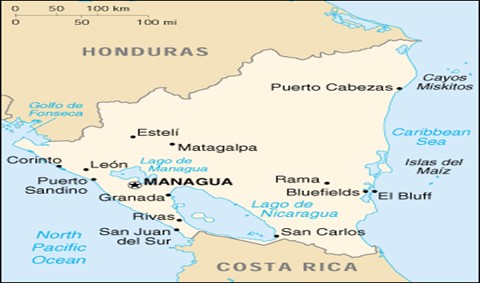

But Contras command structure was a mess from the beginning. And that would figure tragically in the events to follow.
Three things then happened in quick succession, ultimately leading to a terrible decision. First, the agency decided to write “Psychological Operations in Guerilla Warfare,” a manual for Contras’ use (PSYCHOLOGICAL OPERATIONS IN GUERRILLA WARFARE (fas.org), ascribed to the pseudonymous Tayacan but actually written by a CIA contractor and translated into more colloquial regional Spanish. The manual was leaked and created a firestorm in the press, given that it contained advice on how to assassinate and perpetuate mass attacks on civilians.
The agency considered the reason for the writing quite straightforward. The Contras as an insurrectionary group was collapsing, lacked any cohesiveness, was succumbing to internal feuding, and could not be controlled.
Second, a far more serious matter emerged through both HUMINT (human intelligence) and SIGINT (signals intelligence). The Russians were constructing the longest runway in Central America. Located at the Punta Huete airfield across Lake Managua from the capital, it would be the only one in the region long enough to allow huge Soviet Antonov military cargo airplanes to land. It also would serve as a base for both MIG-21 and 23 fighters.
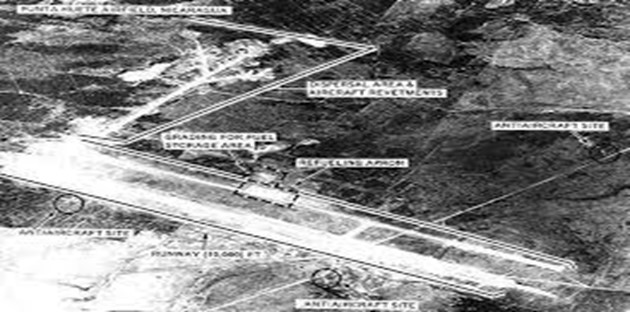

The 21s were the staple older generation Soviet fighters seen around the world. They were a problem but had limited range and armament, as well as suspect radar capabilities. The 23, on the other hand, was a different matter. Here, the range and in air maneuverability were more advanced.
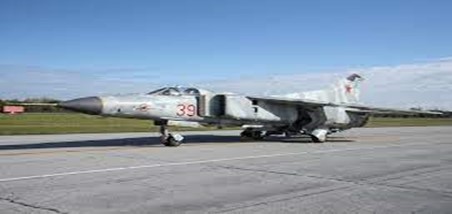

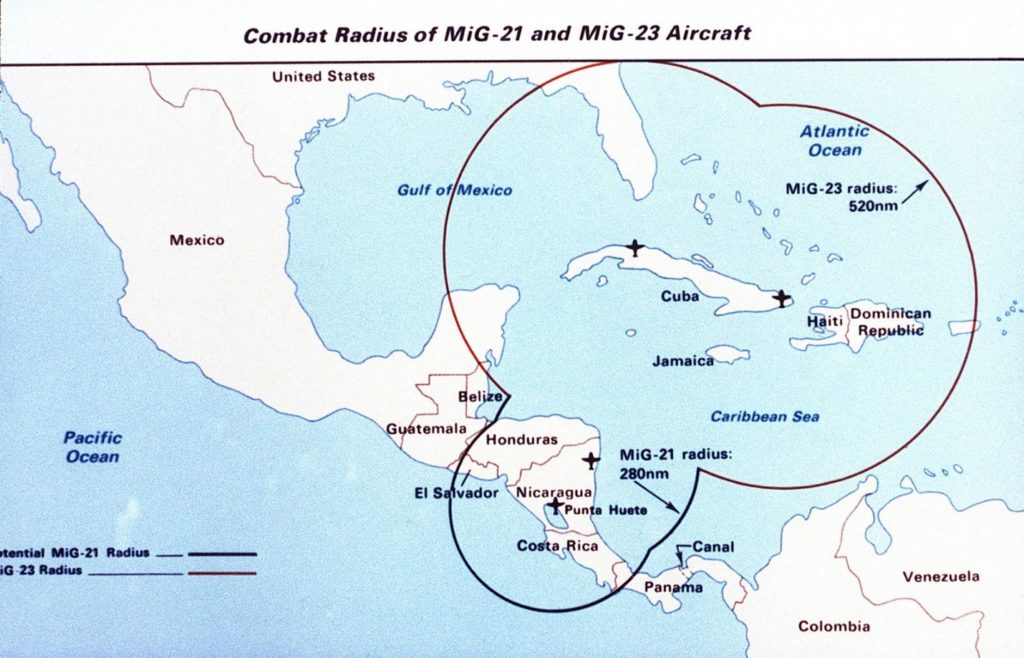

Punta Huete was becoming the focus of a significant upgrade in Moscow’s combat capability and a dramatic change in the ongoing area arms war.
Third, back in Washington, the decision was made (at the highest levels) to take out the runway and support structures. This would be an attack that might put Soviet technicians and advisors in the line of fire.
Initially, plans were drawn up to provide the Contras with the means to accomplish the assignment. But that quickly was shelved when assessment concluded they could not carry it out. They were as likely to blow up each other.
Punta Huete at the time was a very desolate and unoccupied place. The Contras could not be relied upon to perform in the absence of an indigenous local population base.
Therefore, the decision was made to send in Americans to do the job. Paramilitary were seconded to the agency (the CIA had no formal capability in such operations at the time; that would change significantly before the decade was out) and infiltrated into troops participating in the next joint Honduran military exercise.
As cover while preparations were underway, public attention was drawn to the Pacific coast and the Nicaraguan port at Corinto (see the map above). Today, the port remains the country’s largest and is also a terminus for cruises through the Panama Canal. At the time, it had been mined extensively by the US.
The White House claimed that the Kremlin had a large cargo ship bound for Corinto carrying MIGs in a blatant attempt to subvert the delicate Central American arms balance. Each evening the nightly network news (no 24-hour cable outlets or Internet in those days) would carry the latest position of the vessel, along with a dire statement from the White House about consequences.
The manipulation of public opinion was successful with a victory claimed once no fighters disembarked at Corinto. In truth, it was a political sleight of hand. The ship in question had made an unexpected call at the Libyan capital of Tripoli enroute. Whatever it was carrying of concern, was left in North Africa. And then, while all of this was going on, there was an “off the screen” delivery of Bulgarian-made lighter jets on the Caribbean side at the port of El Bluff (once again, see the map above). That DC made no comment on what we know to have taken place on the eastern coast spoke volumes about the fact that introduction of new fighter aircraft was not really the issue.
The detachment (sorry, I am not allowed to even mention the number) moved into Nicaragua and were almost immediately captured by the Sandinista army. Against my specific advice (shared by others), “the man” insisted on keeping the Contras informed. My CI read was that they were thoroughly compromised. Both FSLN intelligence and their KGB patrons were being told what was happening almost in real time.
A goodbye code had been set up to extricate our guys with a min-flotilla out in the Pacific and three hi-speed attack helicopters on an airbase tarmac outside Choluteca in southwestern Honduras.
We had reasonable assurance where they were being detained and the opinion was high to get them out in a firefight if necessary. The “man” said no; he claimed the President did not want an incident.
Then it happened. The FSLN government used the Swiss (the US had no diplomatic relations with Managua) to contact Washington, informed that they had our folks, and awaited response. It went directly to the “man.” He did nothing.
Less than 24 hour later, the message was repeated. Again nothing. Then a third message was sent, only this time the FSLN informed it there was no response, they would execute our personnel.
The “great man” then literally went on a vacation, taking his dim-witted secretary on a boat trip (off Panama, no less).
Our folks were shot. A press report was released stating that they had died in a helicopter accident during “maneuvers” in Honduras. The bodies were sent back (once again with the help of the Swiss), and the “man” went about his business until he became ensnarled in bigger events shortly thereafter.
As for me, I considered spilling the beans that afternoon to the Post. A colleague tracked me down and we stood on the other side of 15th Street for some time (appropriately in front of an Armed Forces Recruitment Center that stood there until it was closed years later). At one point, we seemed to be talking each other into crossing the street into a career ending avalanche of press coverage and heavy-handed political denial.
Finally, we did cross the street but to walk to a bar on M Street for a drink. Actually, several.
The next morning, I took some accumulated personal leave, went home, packed the family into the car, and drove off on an unscheduled vacation of our own. As far from DC as the bank account would allow.


This is an installment of Classified Intelligence Brief, your guide to what’s really happening behind the headlines… and how to profit from it. Dr. Kent Moors served the United States for 30 years as one of the most highly decorated intelligence operatives alive today (including THREE Presidential commendations).
After moving through the inner circles of royalty, oligarchs, billionaires, and the uber-rich, he discovered some of the most important secrets regarding finance, geo-politics, and business. As a result, he built one of the most impressive rolodexes in the world. His insights and network of contacts took him from a Vietnam veteran to becoming one of the globe’s most sought after consultants, with clients including six of the largest energy companies and the United States government.
Now, Dr. Moors is sharing his proprietary research every week… knowledge filtered through his decades as an internationally recognized professor and scholar, intelligence operative, business consultant, investor, and geo-political “troubleshooter.” This publication is designed to give you an insider’s view of what is really happening on the geo-political stage.
You can sign up for FREE to Classified Intelligence Brief and begin receiving insights from Dr. Moors and his team immediately.
Just click here – https://classifiedintelligencebrief.com/






